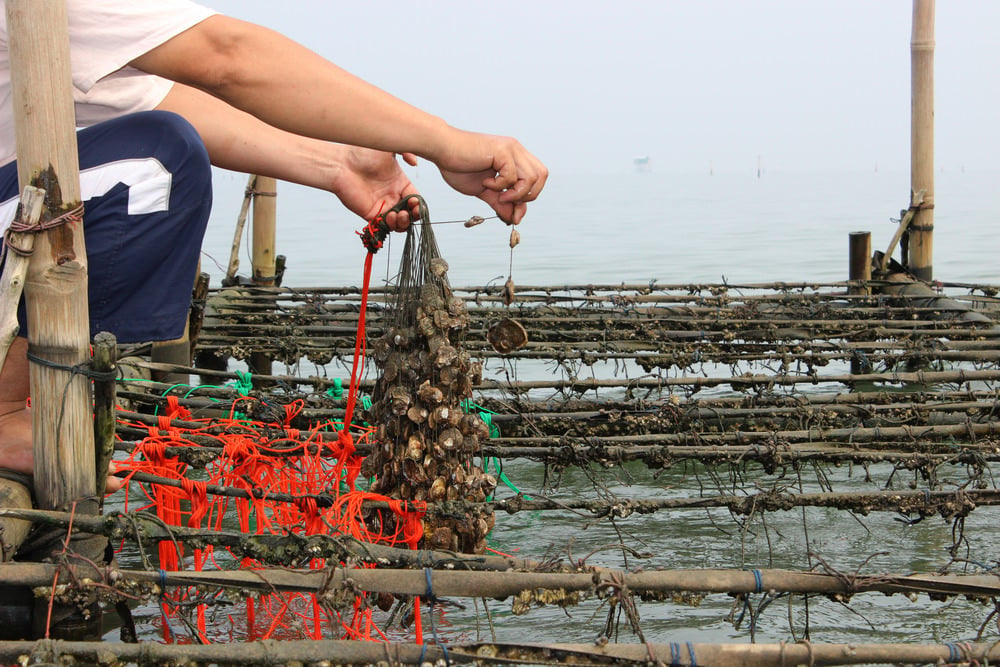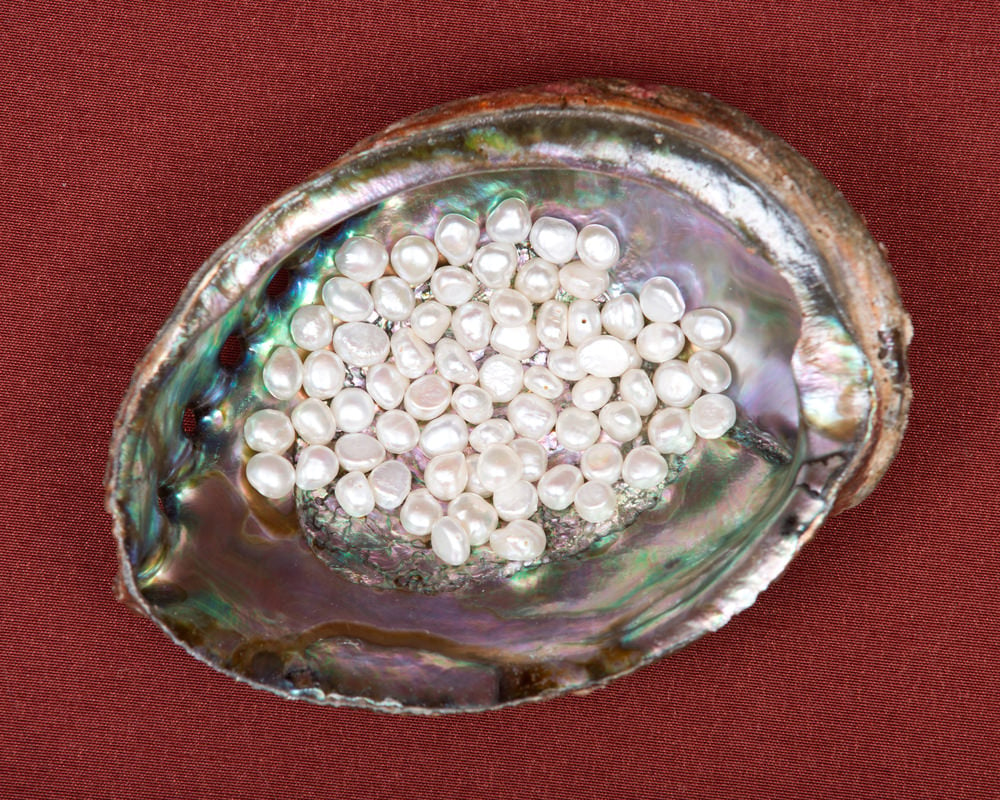Freshwater pearl farming is a fascinating and intricate process that yields some of the most stunning pearls in the world. In this comprehensive guide, we will explore the ins and outs of freshwater pearl farming, from the cultivation of pearls to the harvesting process. These gems, grown within freshwater mussels, are known for their natural beauty and exceptional luster. Join us as we unravel the secrets behind these remarkable pearls.
The Unique World of Freshwater Pearls
Freshwater pearls are cultivated within freshwater mussels, setting them apart from their saltwater counterparts. One of the most striking features of freshwater pearls is their potential for size; they can grow up to ten times larger than saltwater pearls naturally. Additionally, the luster produced by freshwater pearls is nothing short of astounding.
The Purity of Freshwater Cultured Pearls
A defining characteristic of freshwater cultured pearls is their purity. Unlike many saltwater pearls that require a shell bead nucleus, freshwater pearls form without such additions. Each freshwater mussel has the potential to produce multiple pearls in a single production cycle, making them a cost-effective and efficient option for pearl cultivation.
The Easier Path to Cultivation
Freshwater pearl cultivation is less demanding in terms of advanced surgical skills compared to ocean pearl farming. This simplicity not only makes freshwater pearl farming easier but also contributes to their cost-effectiveness, making them more accessible to a broader audience.
Evaluating Freshwater Pearls
The quality of freshwater pearls is assessed through a pearl grading system that takes into account various factors, including surface quality, shape, luster, matching, and color.
Grading Based on Surface Quality
The surface quality of a freshwater pearl plays a crucial role in its overall value and beauty. A flawless surface is highly prized, while imperfections may affect the pearl’s desirability.
The Allure of Various Shapes
Freshwater pearls come in a variety of shapes, ranging from classic rounds to unique baroques. The shape of a pearl can greatly influence its charm and appeal.
Luster: The Hallmark of Freshwater Pearls
Luster is one of the defining characteristics of freshwater pearls. Their captivating, mirror-like sheen sets them apart and enhances their overall beauty.
Achieving Perfect Matching
Matching pearls in terms of size, shape, and luster is essential in creating harmonious and elegant jewelry pieces. Meticulous matching adds value to freshwater pearls.
Exploring the Rainbow of Colors
Freshwater pearls showcase a wide range of natural colors, offering an array of options for jewelry designers and enthusiasts. The color of a freshwater pearl is determined by the mussel’s environment and genetics.

The Process of Freshwater Pearl Farming
Freshwater pearl farming is a complex and time-intensive endeavor. It involves nurturing thousands of oysters over several years to produce pearls. However, it’s important to note that pearl farms are susceptible to uncontrollable forces, such as severe weather, pollution, disease, and other environmental challenges.
Nucleation and Cultivation
The freshwater pearl farming process begins with the collection of oyster eggs and sperm from high-quality oysters already on the farm. These elements are combined to create a new generation of larvae for the oyster farm. The oyster larvae are kept under controlled conditions before being released into the wild.
The Journey from Larvae to Baby Oysters
As the oyster larvae grow, they attach themselves to stable objects like rocks in the water. In a matter of months, they transform into small baby oysters. These baby oysters are then carefully collected and moved to a separate nursery area.
Nucleation: The Key to Pearl Growth
The nucleation process is a surgical procedure in which a foreign object is implanted inside the oyster. This irritates the oyster, prompting it to produce layers of nacre around the irritant. Over time, this process leads to the formation of actual pearls, each with its unique shape and size.
FASHION AND STYLE
It certainly takes a lot of hard work, patience, and great care for an oyster to create a pearl, but the end result is undoubtedly worth it. The remarkable beauty of pearls is truly special, different from any other gemstone. This is why today, pearls are thought of as one of the most timeless gemstones. The pearl necklace, more specifically, has become an iconic piece of jewelry worn by women throughout the world, including notable women such as Jackie Kennedy and Princess Diana who wore the gemstones regularly.
Freshwater Pearl Harvesting
After the oysters have been nucleated, they require a period of recovery. During this time, some oysters may reject the implanted nuclei, while others may experience health issues. However, the majority of oysters recover and contribute to the overall value of the farm.

Preparing for Harvest
Surviving oysters are placed in nets or cages and nurtured in designated oyster beds. The nurturing process can extend for several months to several years, allowing the freshwater pearls to reach their full development.
The Culmination: Harvesting Pearls
Once the pearls have fully developed, the freshwater pearl harvesting process begins. The pearls are carefully extracted from the oysters, cleaned, dried, and sorted. To enhance their luster, some pearls may be polished with water and salt, adding a radiant shimmer to their natural beauty.
The Timeless Appeal of Pearls
Pearls have transcended time and fashion trends, maintaining their status as one of the most timeless gemstones. From iconic pearl necklaces worn by influential figures like Jackie Kennedy and Princess Diana to contemporary jewelry pieces, pearls continue to capture hearts and adorn women worldwide.
Conclusion
Freshwater pearl farming is an intricate and rewarding journey that results in the creation of some of the most enchanting pearls in the world. Their natural beauty, variety, and affordability make them a popular choice among jewelry enthusiasts. Understanding the ins and outs of freshwater pearl farming only deepens our appreciation for these exquisite gems, which continue to hold a special place in the world of jewelry and fashion.
Several factors influence the quality of freshwater pearls, including their surface quality, shape, luster, matching, and color. A flawless surface, round shape, exceptional luster, precise matching, and vibrant colors contribute to the overall value and desirability of freshwater pearls.
Freshwater pearl farming is a time-intensive process. From the collection of oyster larvae to the final harvest, it typically takes between 2 to 5 years to cultivate pearls. The duration can vary based on factors such as the mussel’s environment, water quality, and specific farming practices.
Many freshwater pearl farms are increasingly adopting environmentally sustainable practices. These farms understand the importance of preserving the aquatic ecosystems in which freshwater mussels thrive. By implementing responsible farming techniques, such as water quality management and disease control, they aim to ensure the long-term sustainability of the industry while minimizing environmental impact.

